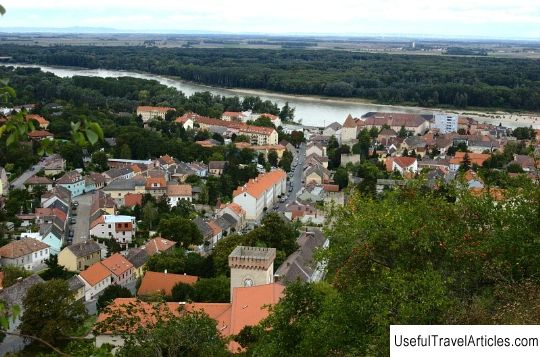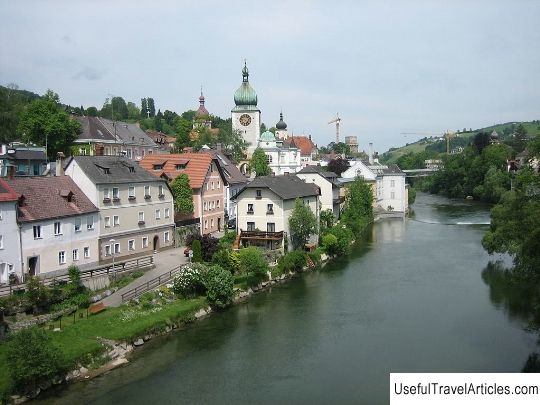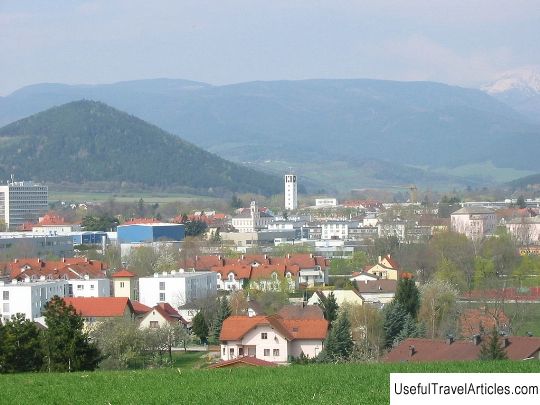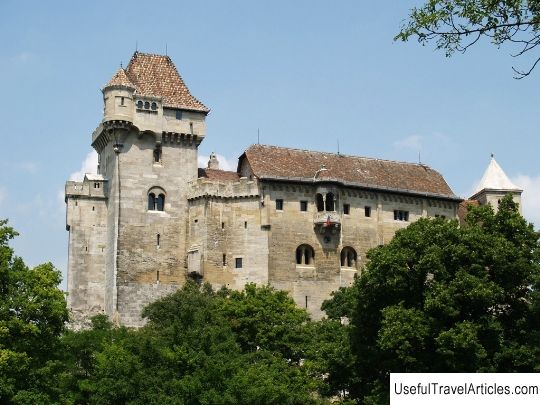Eggenburg description and photos - Austria: Lower Austria
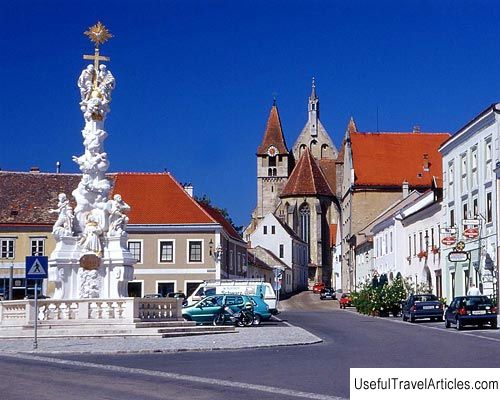
Eggenburg description and photos - Austria: Lower Austria. Detailed information about the attraction. Description, photographs and a map showing the nearest significant objects. The name in English is Eggenburg. Photo and descriptionEggenburg is an Austrian city located in the federal state of Lower Austria, 63 km from Vienna, part of the Horn district. It is known that the local lands have been inhabited since the Neolithic era. The first documented mention of Eggenburg dates back to the 12th century. As a result of the struggle between Ottakar and Rudolf von Habsburg, the city passed into the possession of the Habsburgs and received city rights on August 13, 1277. The city gradually developed, in the 13th century city walls were built, and in the 15th century defensive towers appeared. Eggenburg's defensive city walls were considered the strongest in the country. Duke Albrecht V proclaimed Eggenburg a city of landowners, which served as a powerful impetus to its economic development. In 1713, there was a terrible plague epidemic. which claimed the lives of many local residents. In honor of the victory over the disease, the city donated 365 guilders for the construction of the column of the Holy Trinity, which appeared on the main city square on September 19, 1715. In 1808, a devastating fire occurred in Eggenburg, which destroyed many buildings and industries, which led to the decline of the city. A new wave of development came to Eggenburg with the advent of the railway in 1870. Currently, the city attracts many tourists every year. One of the interesting sights is the museum of collector and researcher Johannes Krahulets, which contains an amazing collection of geological, archaeological and ethnographic finds. In honor of the victory over the disease, the city donated 365 guilders for the construction of the column of the Holy Trinity, which appeared in the main city square on September 19, 1715.In 1808, a devastating fire occurred in Eggenburg, which destroyed many buildings and industries, which led to the decline of the city. A new wave of development came to Eggenburg with the advent of the railway in 1870. Currently, the city attracts many tourists every year. One of the interesting sights is the museum of collector and researcher Johannes Krahulets, which contains an amazing collection of geological, archaeological and ethnographic finds. In honor of the victory over the disease, the city donated 365 guilders for the construction of the column of the Holy Trinity, which appeared on the main city square on September 19, 1715.In 1808, a devastating fire occurred in Eggenburg, which destroyed many buildings and industries, which led to the decline of the city. A new wave of development came to Eggenburg with the advent of the railway in 1870. Currently, the city attracts many tourists every year. One of the interesting sights is the museum of collector and researcher Johannes Krahulets, which contains an amazing collection of geological, archaeological and ethnographic finds. In 1808, a devastating fire broke out in Eggenburg, which destroyed many buildings and industries, which led to the decline of the city. A new wave of development came to Eggenburg with the advent of the railway in 1870.Currently, the city attracts many tourists every year. One of the interesting sights is the museum of collector and researcher Johannes Krahulets, which contains an amazing collection of geological, archaeological and ethnographic finds. In 1808, Eggenburg suffered a devastating fire that destroyed many buildings and industries, which led to the decline of the city. A new wave of development came to Eggenburg with the advent of the railway in 1870.Nowadays, the city attracts many tourists every year. One of the interesting sights is the museum of the collector and researcher Johann Krachulets, which contains an amazing collection of geological, archaeological and ethnographic finds.       We also recommend reading Fort Zoutman description and photos - Aruba: Oranjestad Topic: Eggenburg description and photos - Austria: Lower Austria. |

